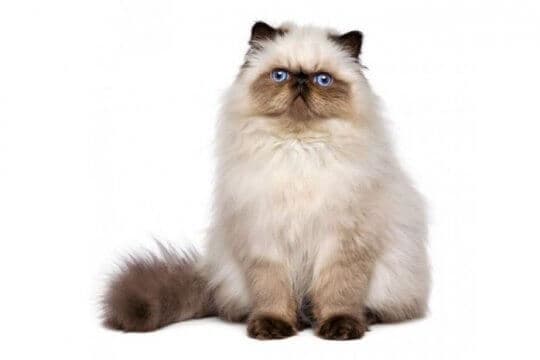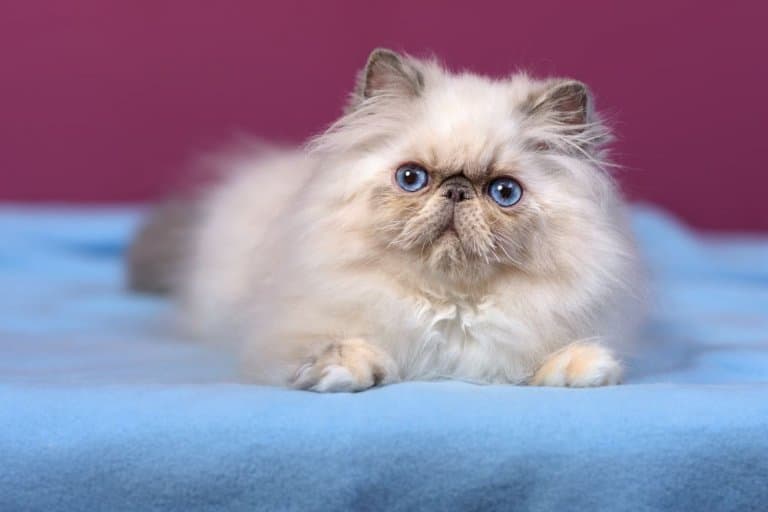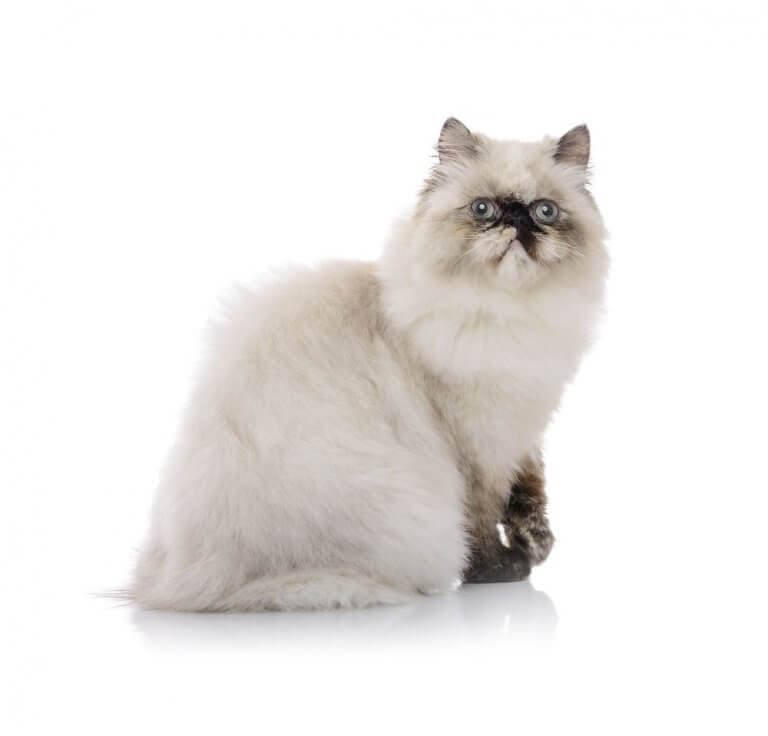
himalayan-cat
Gentle, affectionate, family-friendly, sweet
Overview
Origin
United States
Life Span
12-15 years
Height
12"-14"
Weight
7-12 pounds
Group
Medium-sized longhair
Price
$200-$3,000
History

During the 1930s, two Harvard researchers named Dr. Clyde Keeler and Virginia Cobb decided to conduct a study by combining Siamese and Persian cats. Their efforts led to the birth of a cat named Newton's Debutante. They simply called it a Siamese–Persian after its parents. This beautiful cat had classic Siamese colorpoint markings, blue eyes, and a long, silky coat. He ultimately became one of the first cats to represent the Himalayan (Colorpoint Persian) breed.
Cat breeder and conservationist Jean Mill, also known as the founder of the Bengal cat breed, began working on the breed in 1948.
In 1955, Brian Sterling-Webb created a similar crossbred cat that he called the Long-Haired Colorpoint. In 1957, Marguerita Goforth's continued efforts at combining Siamese and Persian cats gained breed recognition from the Cat Fanciers' Association (CFA). Goforth is credited with naming the Himalayan cat breed.
Outcrossing to both Siamese and Persian cats continued throughout the next few decades, with various breeders focusing on either Persian or Siamese traits. In 1984, the CFA decided that the Himalayan cat was actually a Persian variant and many of today's Himalayans exhibit more Persian traits than Siamese traits.
All major cat registries recognize the breed, using either the Himalayan name or the Colorpoint Persian name. Despite the labeling conundrum that pits the Himalayan versus the Colorpoint Persian, both breeds are exactly the same.
Care

Nutrition
Himalayan cats have no special nutritional needs, but like all other cats, the Himalayan thrives on a high-quality diet that includes real meat or fish as the first ingredient. You might wish to look for food that contains added omega essential fatty acids to support skin and coat health.
Grooming
Long, luxurious fur calls for daily grooming sessions, which Himalayan cats typically enjoy. Not only does daily brushing prevent mats from forming, it is a wonderful bonding ritual. Some Himalayan cats require daily facial care to remove tear staining. This is more common in individuals with flatter faces and facial folds that catch moisture as it travels down from the tear ducts.
Exercise
Because the Himalayan cats are prone to obesity, it is very important to encourage daily exercise. Luckily, these cats enjoy intense play and come to look forward to it once it is a habit. Just like Siamese, Himalayan cats enjoy interactive games like fetch and will happily chase a laser beam (just be sure not to shine the laser into your cat's eyes).
Health
Himalayan cats are generally healthy, however, some do carry the gene for polycystic kidney disease. Responsible breeders test for PKD, greatly reducing the likelihood of producing kittens that are prone to the disease.
Breed Standard

Body
The Himalayan/Colorpoint Persian has a cobby body with a round appearance and ample underlying strength, with a broad chest and shoulders.
Head
Himalayan/Colorpoint Persian cats have round, broad, smooth-domed heads with great breadth. The face profile is short with a snub-nose and definite break directly between the eyes. The muzzle is short broad and full.
Eyes
The Himalayan/Colorpoint Persian cat has large, round, blue eyes. The deepest blue color is preferred, but lighter eyes are acceptable as long as they are blue.
Ears
The ears are typically small and rounded, set wide apart and positioned low on the skull. Dense ear furnishings are typical.
Color
The Himalayan/Colorpoint Persian is a pointed cat with a lighter-colored body and darker-colored extremities (head, tail and feet). The points may be chocolate, blue, cream, seal, tortoiseshell, or flame (red). Pointed patterns include solid point, tortoiseshell point, bicolor point, tricolor point, tabby or lynx point, smoke point and shaded point.
Coat
Himalayan/Colorpoint Persian cats have long, double coats. A distinct ruff surrounds the neck, there is a lovely frill between the front legs, and there are typically tufts between the toes.
Tail
A Himalayan/Colorpoint Persian cat has a thick, well-plumed tail with a rounded tip.
Legs & Paws
The legs are strong and thick, with a sturdy appearance. The paws are large and round, preferably with tufts between the toes.